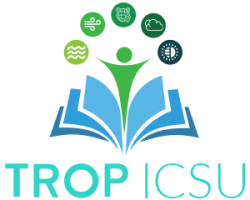Daisyworld – A Model to Explore the Gaia Hypothesis

Daisyworld – A Model to Explore the Gaia Hypothesis Model/Simulation A Model/Simulation to explore the Gaia hypothesis and the concepts of albedo and hysteresis through the example of daisies (living organisms) and their interaction with temperature (climatic factor). Students will configure the distribution of black daisies and white daisies, the albedo for each of these […]
Human Health, Vector-Borne Diseases, and Climate Change

Human Health, Vector-Borne Diseases, and Climate Change Video This video gives an overview of Climate and Health, and especially about the vector-borne diseases. /p> /p> About Tool Tool Name Human Health, Vector-Borne Diseases, and Climate Change Discipline Biology Topic(s) in Discipline Human Health, Vector-Borne Diseases Climate Topic Climate and Health Type of tool Video Grade […]
Climate Change and the American Pika

Climate Change and the American Pika Video A video that explains the impact of climate change on the habitat and population of a species (specifically, the American Pika) and explores whether this species could be used as an indicator of climate change. Students will learn about climate-related factors that are important for the survival of […]
Phenology and Climate

Phenology and Climate Reading A reading that introduces the topic of phenology, its significance, and the link between plant phenology and climate. Students will learn about phenological events, the influence of seasonal and climatic changes on phenological events, phenophases and how they may be affected by climate change, and the possible impact of changes in […]
Climate Change and Human Health- Analysis and Policies

Climate Change and Human Health- Analysis and Policies Game A computer-based game to understand the impact of climate change on health and to determine actions/policies for preventing the spread of diseases. Students will play a game to identify diseases from their symptoms, learn about the impact of climate change on health, and choose actions or […]
Climate Change & Phenological Events in Plants and Animals

Climate Change & Phenological Events in Plants and Animals Teaching Module A set of resources to understand the link between periodic life-cycle events in plants and animals (such as flowering, leaf-out, and migration), and climate change. Students will work on a range of activities–learn about phenology, investigate phenological events, and analyze the link between climate […]
Climate Change and Leaf-out in Plants

Climate Change and Leaf-out in Plants Classroom/Laboratory Activity A classroom/laboratory activity to explore the possible role of climate-related environmental factors in the timing of leaf-out in plants (specifically, red maple leaf-out in New England). In this activity, students will create graphs by using data for the timing of red maple leaf-out in New England. They […]
Survival Skills-Response of Organisms to Climate Change

Survival Skills-Response of Organisms to Climate Change Classroom/Laboratory Activity A classroom/laboratory activity to analyze the distribution of beetle, mammal, and plant species (for datasets from North America) in the past (based on fossil records), determine whether the same species exist today, and compare the past and present geographic ranges and ecosystems of these species. Students […]
Climate Change and Phenology in Plants (Flowering)

Climate Change and Phenology in Plants (Flowering) Classroom Activity A classroom/ laboratory activity to learn about phenology and phenological events, and to understand the potential impacts of climate change on periodic life-cycle events in plants, specifically, on the bloom date of North American lilac shrubs. Students will use phenology data on flowering patterns to create […]
Malaria and Climate Change

Malaria and Climate Change Classroom/Laboratory Activity A classroom/laboratory activity to establish the potential link between the geographic distribution of malaria and increasing temperature caused by climate change. Students will use maps and temperature data sheets to determine the locations where malaria is known to occur and the temperature ranges in these locations. Further, they will […]


